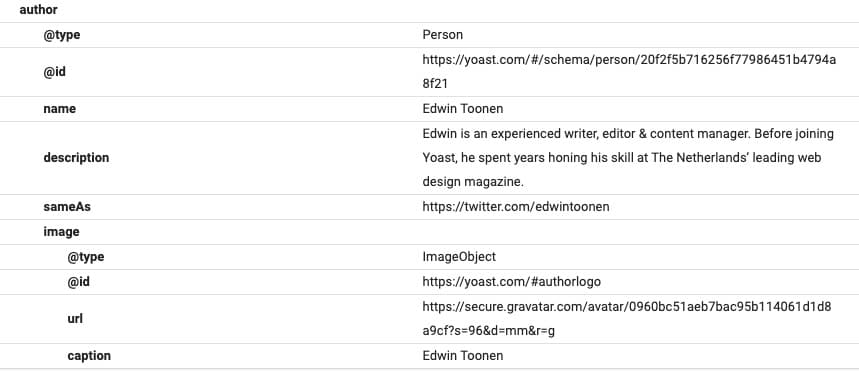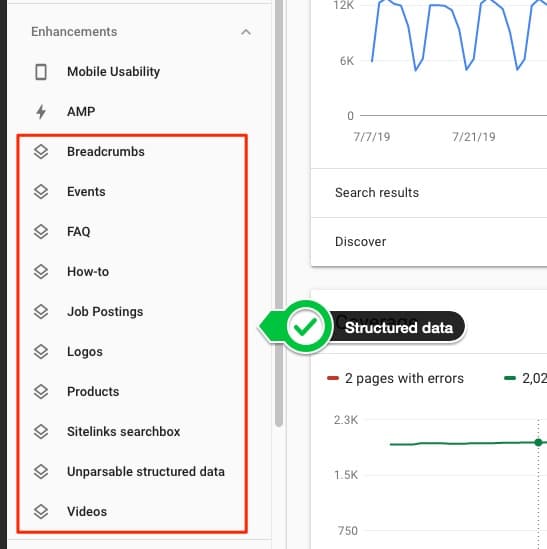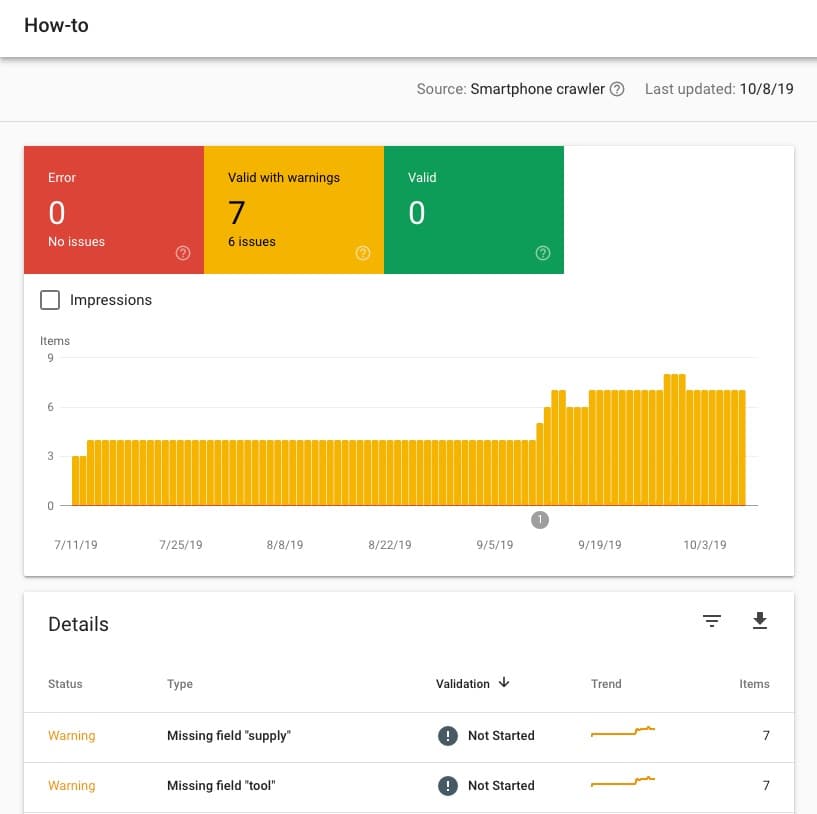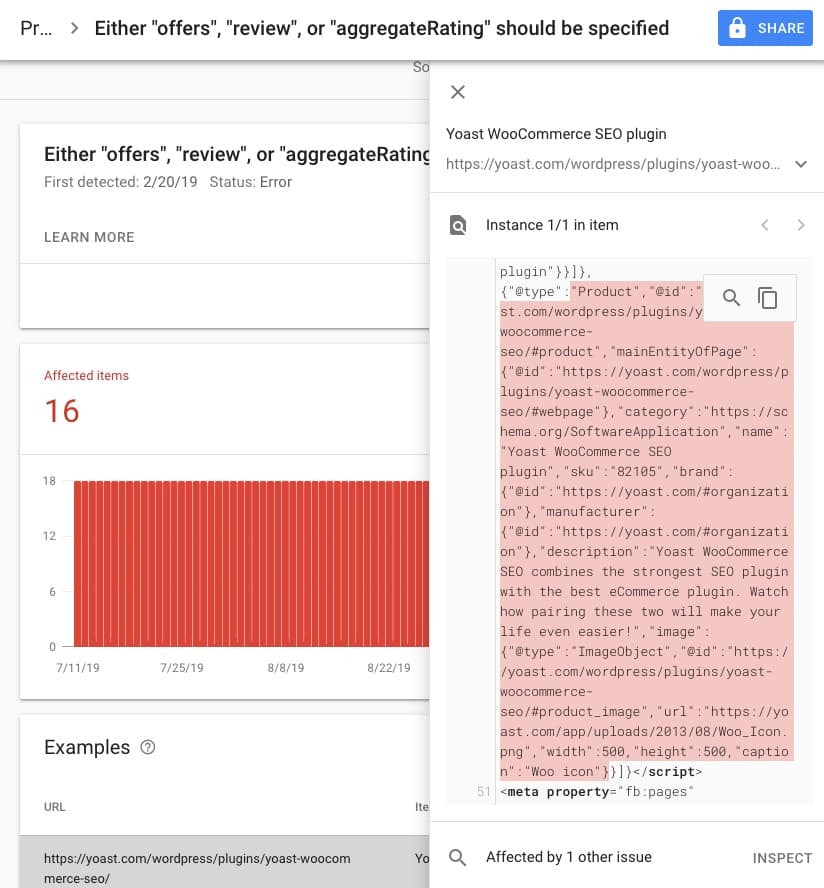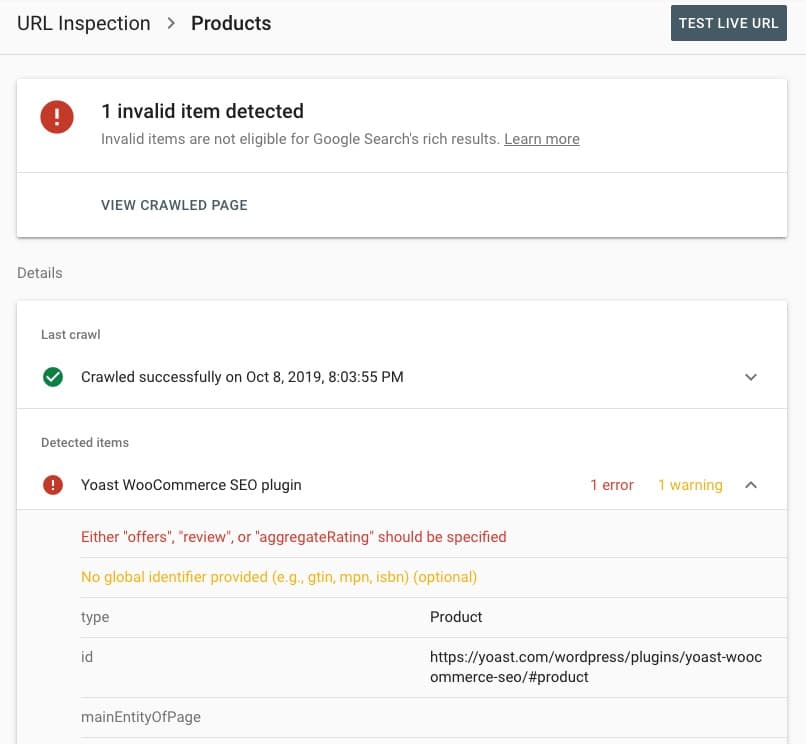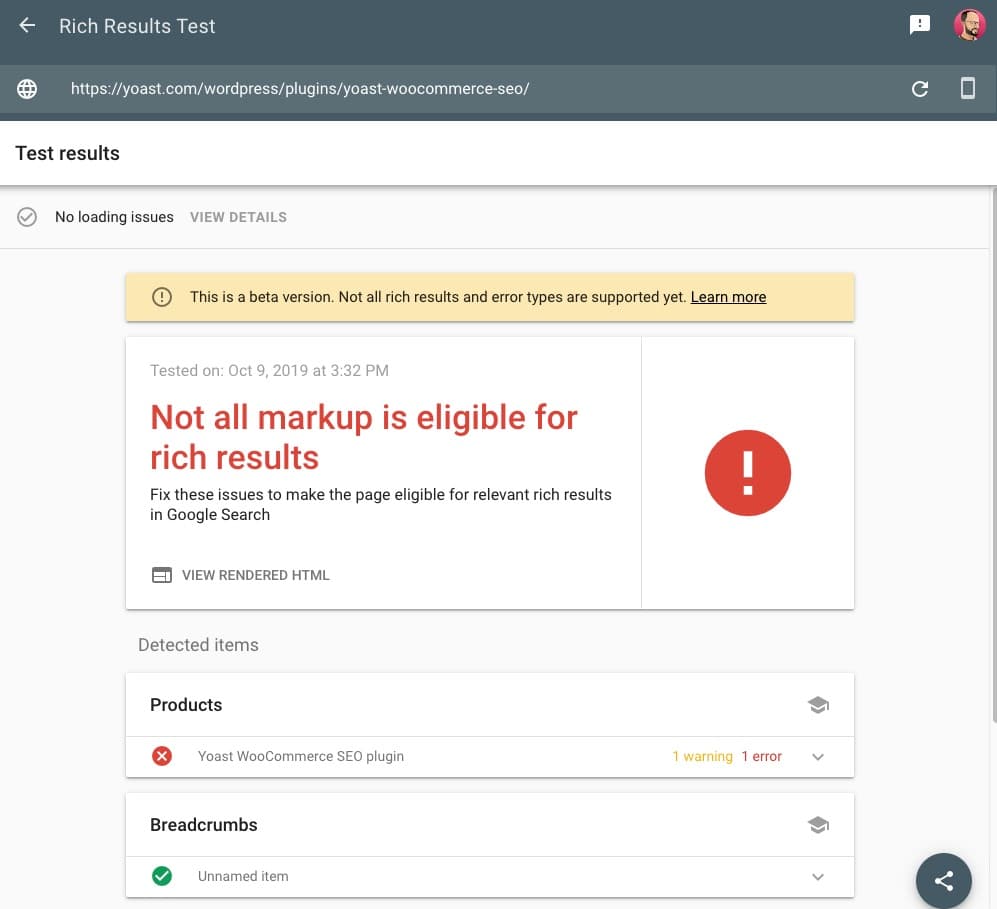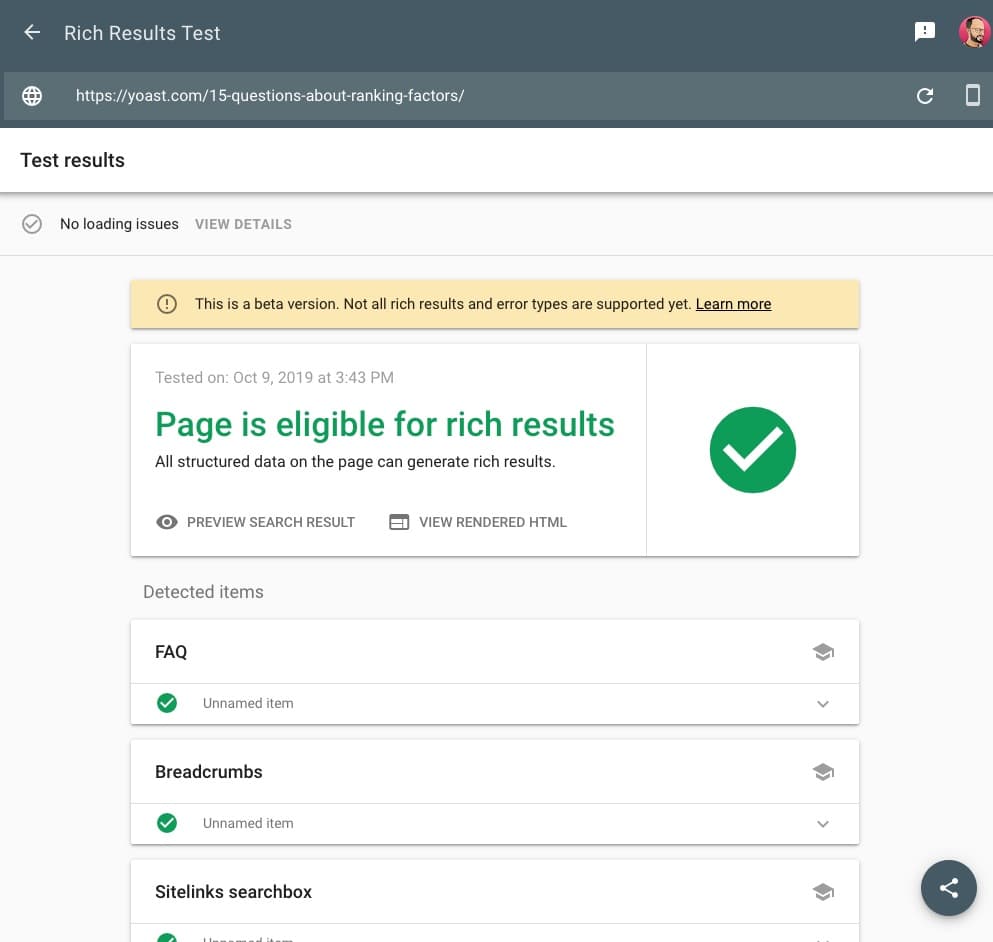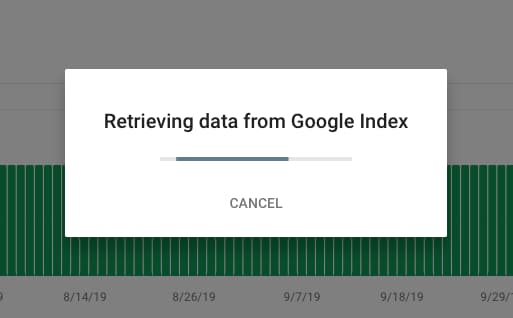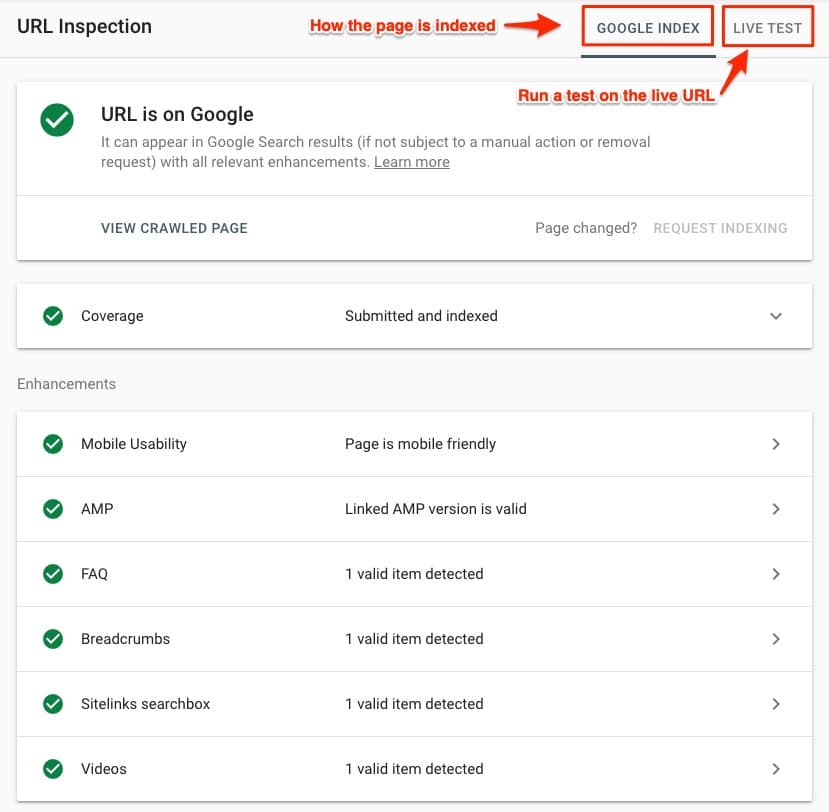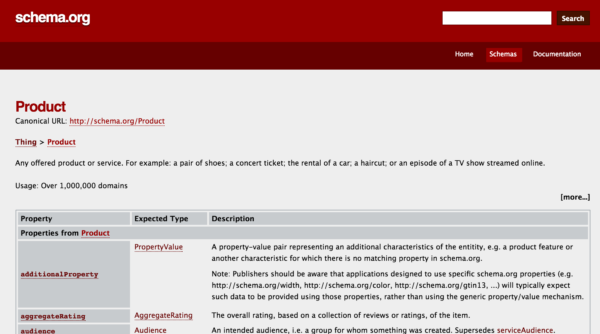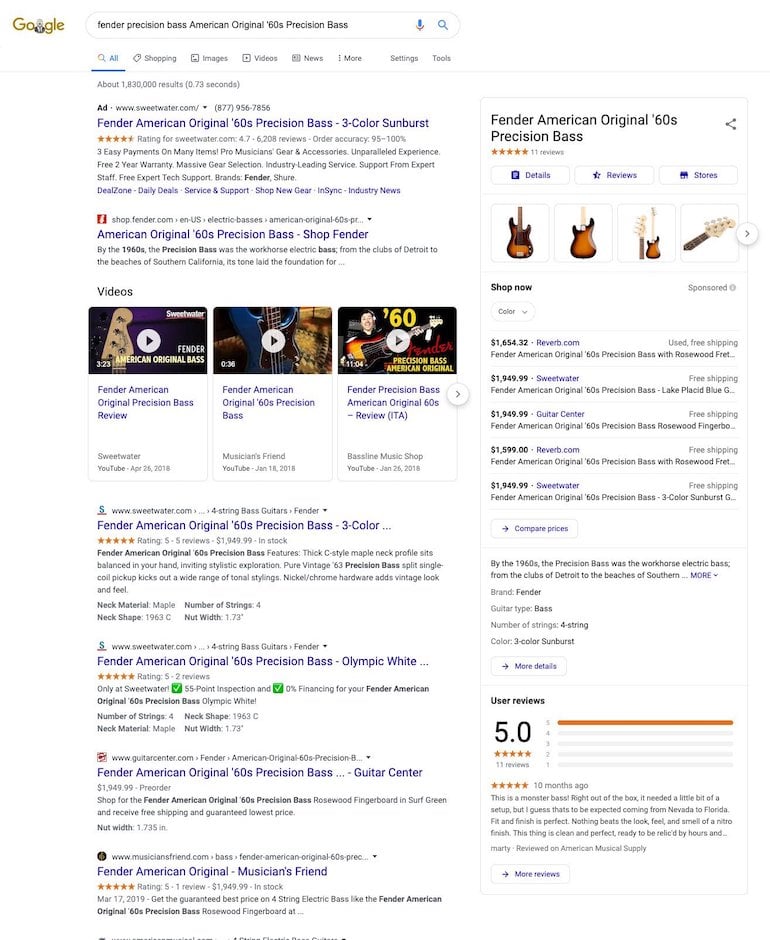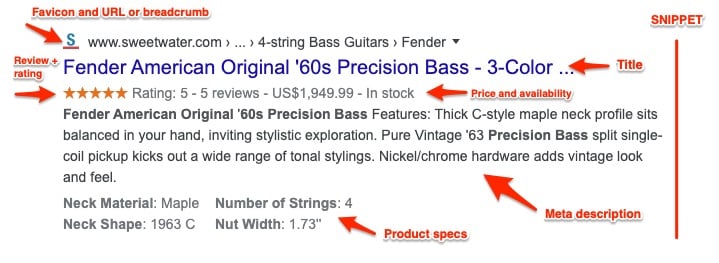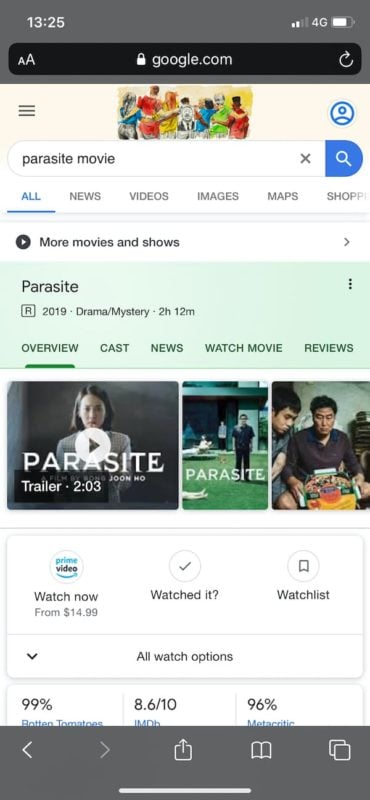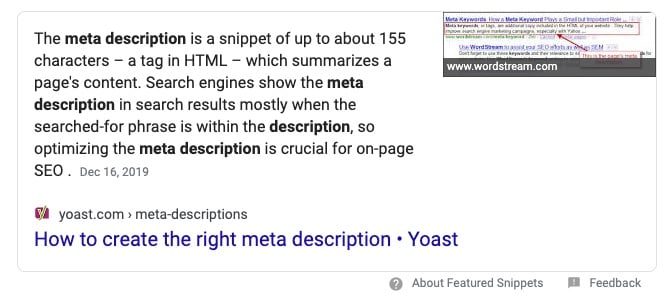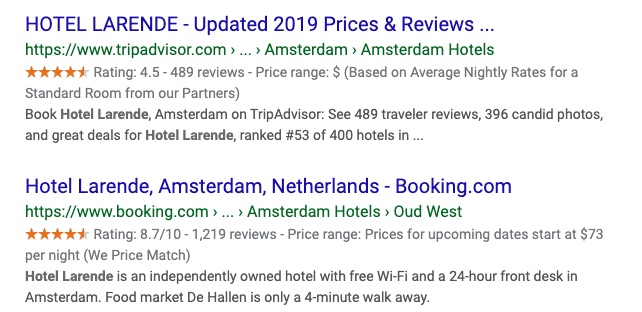Schema.org takes care of all the structured data needs on your website. You can use it to markup products, reviews, events and menu items so search engines like Google can pick up this data and present it in an enhanced way. If you want rich snippets, mobile rich cards or a listing in the knowledge graph, you need to mark up your pages with Schema.org. This ultimate guide gives you an overview of this expansive topic.
What is structured data?
Structured data is the data you add to your website to make it easier to understand for search engines. You need a vocabulary to make it work and the one big search engines use, is called Schema.org. Schema.org provides a series of tags and properties to mark up your products, reviews, local business listings, etc in detail. The major search engines, Google, Bing, Yandex, and Yahoo, collectively developed this vocabulary to reach a shared language in a quest to get a better understanding of websites.
If implemented correctly, search engines can use the applied structured data to understand the contents of your page better. As a result, you might get a better presentation in the search results, for instance, in the form of rich snippets or rich cards. However, there are no guarantees you’ll get rich listings; it’s all up to the search engines.
Why do you need Schema.org data?
Marking up your products, reviews, events, and more with structured data in the form of Schema.org makes your site instantly comprehensible by search engines. What this means, is that you can tell exactly what every part of your site is about. Search engines no longer have to guess that a product listing is a product listing, you can now say it is.
Is Schema.org important for your SEO?
To cut a long story short: yes, structured data in the form of Schema.org is important for your SEO. Correctly implementing data might not give you better rankings, but it will indirectly make your site a better search result.
Enhanced listings give searchers an easier way to pick a result from the list of links. If your listing is rich, and your page does what your listing promises, you are a valid result for the customer and that will lead to a lower bounce rate. A lower bounce rate tells Google that your site is a well-regarded result that promises and delivers.
In addition to that, since structured data is just picking up steam, you have a viable chance to get a head start on your competitors. Just think about it, if you have a barber shop and you markup your 300 five-star reviews, you are way ahead of your competitor who doesn’t mark up his reviews. Google picks up this data and shows it directly in the search results. If you are looking for a barber shop in Google, who would you pick? The one with no reviews or the one with 300 good ones?
Structured data leads to rich results
By making your site understandable for search engines, you give them the opportunity to do interesting things with your content. Schema.org and its support is in a constant flow, so changes will happen. Structured data forms the basis for a lot of new developments in the SEO world, so there’s bound to be more in the near future. Below are the kinds of rich search results that are in use at this moment.
Rich Snippets

Rich snippets are the extra pieces of information shown in a search result. In addition to the regular black lines of meta description text, a search result can be enhanced with product information like prices or reviews, or extra navigational tools like breadcrumbs or site search.
Read more: ‘Rich snippets everywhere’ »
Rich Cards

A Rich Card appears on mobile and is a new kind of rich search result developed by Google. Search results for certain types of items, like local restaurants, recipes, movies and courses, can get a special treatment in the mobile results. These are presented in a touch-friendly, swipeable way.
Keep reading: ‘How to get mobile Rich Cards in Google’ »
Knowledge Graph

The Knowledge Graph is the big block of information on the right-hand side in Google. This block details different kinds of information about a particular search result. If you have a validated company or if you are an authority on a certain subject, you might see your name, logo and social media profiles appear.
Featured snippets

This might be a sneaky addition because featured snippets are rich search results, but they do not get their content from structured data. A featured snippet answers a search question directly in the search results, but uses regular content from the viable web page to do so.
Does it work on mobile?
Yes, it works everywhere. Mobile implementation of Schema.org data is in its infancy, though. As of today, there are not many specific mobile-centric applications of Schema.org. However, Google has been pushing mobile rich search results for a while now.
If a page meets the criteria set by Google, you can now book movie tickets or reserve a table at a restaurant directly from the search results. If you implement structured data correctly, you can also be eligible for a new sort of presentation in the form of mobile Rich Cards, as explained above.
Different kinds of Schema.org
If you look at the Schema.org website, you’ll notice that there are a lot of possibilities to add structured data to your site. Not everything is relevant, though. Before you start implementing Schema.org, you must know what you need to markup. Do you have a product in an online store? Do you own a restaurant? Or do you have a local business providing services to the community? Whatever it is, you need to know what you want to do and explore the possibilities.
Don’t go for the most obscure ones; pick the ones that are relatively easy to implement. Some Schema.orgs appear on less than a thousand sites, but others appear on millions. It’s possible to put the major Schema.orgs into two groups: Creative Works and Commerce. Within these groups, you will find the most common items to markup with Schema.org. These are the most important ones:
Creative works
The first major group is Creative Work and it encompasses the most generic group of creative works. In this group, you’ll find items that have been produced by someone or something. You’ll find the most common ones below, but the list is much longer. In addition to these, you’ll find properties for sculptures, games, conversations, software applications, visual artworks and much more. However, most of these properties don’t have a rich presentation attached to it in search engines, so they are less valuable. But, as mentioned before, if your site has items in the categories below, make sure to mark them up with Schema.org.
Articles
An article could be a new item or part of an investigative report. You can make a distinction between a news article, a tech article or even a blog post.
Books
A book is a book, be it in a paper form or in digital form as an eBook. You can markup every type of property, from the author how wrote it to the awards it has won.
Courses
In the future, anyone offering a type of course can use the new Schema.org. At the moment, Google is holding small-scale tests with selected participants to see how this Schema.org performs.
Music
Music can also receive the structured data treatment. There are a couple of Schema.org of interest for music, like MusicRecording, MusicAlbum, MusicEvent and MusicGroup.
Recipes
By adding Recipe data to the recipes on your cooking website, you can get your recipes featured directly in search results. What’s more, with the advent of Rich Cards, recipes might even be presented in a stunning new way on mobile.
TV & Movies
Movies and TV shows get their own piece of structured data as well. Searching for a movie in search engines will yield a rich result with reviews, poster art, cast information and even the ability to directly order tickets for a showing.
Videos
It’s possible to do all kinds of interesting things with video. Google, in particular, is working on new ways to get videos in the search results, with AMP for instance. Google can use your videos in AMP carousels and Top Stories listings.
Commerce
The second major group is Commerce. In this group, you’ll find several important types to mark up with Schema.org. Many site owners will find the subjects below very interesting and these should be a top priority for many of them.
Events
Marking up your event listings with the correct Event Schema.org, might lead search engines showing your events directly in the search results. This is a must have if you own a nightclub, a venue or any type of business that regularly puts on events.
Businesses and organizations
If you make money with your website chances are you own a business. If you’re a site owner or just work on a company site, you’ll find the business and organization Schema.org’s interesting. Almost every site can benefit from the correct business Schema.org. If you do it well, you could get a nice Knowledge Graph or another type of rich listing in the search engines.
Read on: ‘Local business listings with Schema.org and JSON-LD’ »
Products
Almost as important as the Schema.org mentioned in the previous paragraph, is the one for products. Using Product Schema.org you can give your products the extra data search engines need to give you rich snippets, for instance. Think about all the search results you see with added information, like pricing, reviews, availability, etc. This should be a substantial part of your structured data strategy, if you have products of course.
Read more: ‘Rich snippets for product listings with Schema.org’ »
Reviews
Reviews and ratings play an important role in today’s search process. Businesses, service providers and online stores all use reviews to attract more customers and show how trustworthy their offerings are. Getting those five stars in search engines might be the missing link to creating a real successful business.
Keep reading: ‘Grow your business with ratings and reviews’ »
The technical details
To get started with making up your pages, you need to know about how Schema.org actually works. If you look closely at the full specs on Schema.org, you’ll see that there is a strict hierarchy in the vocabulary. Everything is connected, just like everything is connected on your pages. Scroll through the list to see all the options at a glance and note down the ones you think you need.
Let’s look at the hierarchy. A Schema.org implementation starts with a Thing, this is the most generic type of item. A Thing could be a more specific type of item, for instance, a Creative Work, an Event, Organisation, Person, Place or Product.
For example, a movie is a “Thing” and a “Creative Work”, which falls under the category “Movie”. You can add a lot of properties to this, like a “Description”, a “Director”, an “Actor”, a poster “Image”, “Duration” or “Genre”. There are loads of properties to add, so you can get as specific as you want. However, don’t go overboard, since not every property is used by search engines – not yet anyway. What you should do, is look at the specifications in Google’s documentation, for instance, to see which properties are required and which are recommended.
A sample Schema.org hierarchy
If we put what we know now in a hierarchy, this is what you will end up with:
- Thing
- Creative Work
- Movie
- Description (type: text)
- Director (type: person)
- Actor (type: person)
- Image (type: ImageObject or URL)
- etc.
If it would be a local business, you could use something like this:
- Thing
- Organisation (or Place)
- LocalBusiness
- Dentist
- Name
- Address
- Email
- Logo
- Review
- etc.
For local businesses, you could pick a more specific type of business. This makes it easier for search engines to determine what kind of business you own. There are hundreds of types of local business, but your business might not fit one of the descriptions. Using the Product Types Ontology you can get more specific information if your listing is too broad.
Sticking to the local business example, you’ll see that Google lists several required properties, like the NAP details of your business. In addition to that, there are loads of recommended properties, like a URL, geo-coordinates, opening hours, etc. Try to fill out as much of these as you can, only then search engines can give you the full preferred presentation. If you need help with your local business markup, you’ll find our Local SEO plugin very helpful.
What do you need to mark up?
When looking at Schema.org for the first time, it might feel a bit daunting. The list is enormous and the possibilities are endless, so it’s easy to become overwhelmed. To overcome this sensation, you need to go back to basics. Find out what your site, business or product is about and write down the specifications and properties you deem important. Work your way up from there.
Having said that, there are a couple of sections you should prioritize in your plan to add structured data to your site. If you start off with these three, you’ll have the basics covered and gives you the opportunity build on that. You should absolutely start with structured data for your business details, products, and reviews. These will have the biggest effect in the short run.
How to implement structured data with Schema.org
Don’t be frightened, but here comes the technical part of the story. However, there’s nothing scary about adding the data to your pages, not any more thanks to JSON-LD. This JavaScript-based data format makes it a lot easier to add structured data since it forms a block of code and is no longer embedded in the HTML of your page. This makes it easier to write and maintain, plus it’s better to understand by both humans and machines.
Schema.org with JSON-LD
JSON-LD is the preferred method of adding Schema.org to your site. However, not all search engines are quick to adopt it; Bing is the odd man out. Let’s hope Microsoft will soon come about and add support for this rather efficient method.
Below you see a sample product listing of our flagship SEO plugin: Yoast SEO. This is just a small product listing with only the basics; you’ll see a type, name, image, description, and brand. At the end of the code, you’ll also find an offer to buy the plugin, which has a price of $69.
If you want to learn more about working with all of this on your site, you should read Michiel’s article on how to use JSON-LD to add Schema.org data to your website.
The old ways: RFDa and Microdata
The classic way of writing structured data for inclusion on your pages, involved direct embedment in your HTML. This made a really inefficient and error-prone process. It is part of the reasons why the uptake of Schema.org hasn’t been particularly fast. Writing and maintaining it via RFDa or Microdata is a pain. Believe us, try to do as much as you can in JSON-LD.
Here’s a Microdata example for marking up a movie. Because the code needs itemprops to function, everything has to been inline coded. You can instantly see how that makes it hard to read, write and edit.
Structured data and Google AMP
The open source AMP project (Accelerated Mobile Pages) has been causing quite a stir these last few months. The project’s goal is to get pages to load lightning fast on mobile. To do that, the project uses a special kind of HTML. Google is pushing AMP pretty hard and also mentions its reliance on structured data. If you want to use AMP and completely give your pages the once over, you need to add structured data. Google uses several Schema.org items to take care of the more interactive parts of AMP elements. You can use Yoast SEO in conjunction with our AMP Glue plugin to take care of most AMP needs.
Schema.org is not too hard to work with, but if adding code by hand seems scary, you could try some of the tools out there. If you are still not sure how to go about this, ask your web developer for help, he’ll probably fix this for you in a couple of minutes.
- Generators
- Validators and test tools
- WordPress Plugins
External links
Most search engines have their own developer center where you can find more information on the inner workings of the structured data implementations. Read these to see what works and what doesn’t. In addition to that, you should adhere to their rules, because a bad Schema.org implementation could lead to a penalty. Always check your code in the structured data test tool to see if it’s correct. Fix errors and regularly maintain the code on your site to see if it is still up to scratch.
In the end
You can’t run away from structured data anymore. If your site means anything to you, you should look into it and figure out the best way to make use of Schema.org. Implemented correctly, it can do great things for your site, now and in the future. Search engines are constantly developing new ways to present search results and more often than not do they use Schema.org data to do so.


